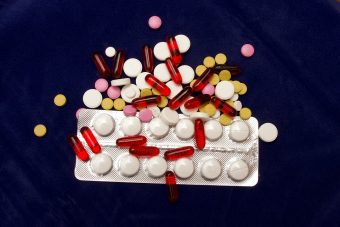
The EU has scrapped plans for a clampdown on pharmaceutical pollution that contributes to the spread of deadly superbugs.
Plans to monitor farm and pharmaceutical companies, to add environmental standards to EU medical product rules and to oblige environmental risk assessments for drugs used by humans have all been discarded, leaked documents seen by the Guardian reveal.
An estimated 700,000 people die every year from antimicrobial resistance, partly due to drug-resistant bacteria created by the overuse, misuse and dumping of antibiotics.
The UK’s chief medical officer, Dame Sally Davies, has warned that failing to act could lead to a post-antibiotic apocalypse, spelling “the end of modern medicine” as routine infections defy effective treatment.
Some studies predict that antimicrobial resistance could cost $100tn (£75tn) between now and 2050, with the annual death toll reaching 10 million over that period.
An EU strategy for pharmaceuticals in the environment was supposed to propose ways to avert the threat, but leaked material shows that a raft of ideas contained in an early draft have since been diluted or deleted.
Proposals that have fallen by the wayside include an EU push to have environmental criteria for antibiotic use included in international agreements as “good manufacturing practice requirements”. This would have allowed EU inspectors to visit factories in Asia or Africa, sanctioning them were evidence of pharmaceutical pollution found.
In turn, this could have impacted trade negotiations between the EU and India, where waterway pollution more than doubled in the first half of this decade, partly due to industrial effluent.
India is an outsourced hub for global drug manufacturing and a study published last year in the science journal Infection said “excessively high” levels of pollution from antibiotics were found in waterways around Hyderabad.
Nusa Urbancic, a spokeswoman for the Changing Markets Foundation, said: “We are shocked that the European commission seems willing to get rid of the option to include environmental criteria … so early on in the process, given the overwhelming evidence presented about how pharmaceutical pollution contributes to the proliferation of drug-resistant bacteria.”
A replacement passage in the new draft suggesting “the possibility of using procurement policy to encourage greener pharmaceutical design” was described as “completely lame” and “entirely toothless” by Nina Renshaw, secretary general of the European Public Health Alliance. “This approach will not work as worst offenders will still have the option to continue dumping antibiotics into their local environment,” said Renshaw.
Another dropped proposal would have ensured that pharmaceutical firms collect, monitor and share data on the discharge of their microbials into effluent from global hotspots, often caused by intensive livestock farms.
Scientists have noted a worrying lack of global research into such links, and the information shortfall may have commercial and public health repercussions.
Sasja Beslik, the head of sustainable finance at Nordea Bank AB, which holds €300bn (£263bn) in assets, said that revealing the data would “increase transparency and make investors more informed about risks. For us, timely and adequate information is key to assess materiality of risks.”
The inclusion of environmental criteria in good manufacturing practices would be “crucial” for drug makers, he added.
The drift of the commission’s strategy has been in the opposite direction, however. An initial objective to “reduce the nonessential use of pharmaceuticals” has been replaced with a more corporate-friendly goal, to “promote the prudent use of pharmaceuticals”.
One EU source, speaking on condition of anonymity, said: “That is not the wording we would have chosen, or that we drafted for this. There has been some rewording and toning down of the level of commitment – because we can’t make those commitments without investigating further – and so they’ve become more vague.”
Urbancic, though, was unconvinced. “The commission’s strategy has already been delayed for three years,” she said. “The weakening of this draft has the fingerprints of pharmaceutical industry all over it.”
The European commission refuses to comment on leaked documents but sources said that there had been “no particular pressure” on officials who compiled the earlier draft.
The pharmaceutical industry spent nearly €40m on lobbying EU institutions in 2015, according to voluntary declarations, and enjoys infamously easy access to officials.
Public records show that the European Federation of Pharmaceutical Industries and Associations had more than 50 meetings with the Juncker commission in its first four and a half months of office.
In the same period, GlaxoSmithKline had 15 meetings with the commission, Novartis had eight engagements, Sanofi and Johnson & Johnson had six sessions apiece, while Pfizer and Eli Lilly both met with EU officials five times each.
Other scrapped measures in the EU strategy would have obliged pharmaceutical companies to complete environmental risk assessments for human medicinal products before they could be authorised. Most pharmaceuticals currently lack details about their ecotoxicological properties.
The final version of the EU’s strategy on pharmaceuticals in the environment is expected to be published later this summer.
Source: Guardian



